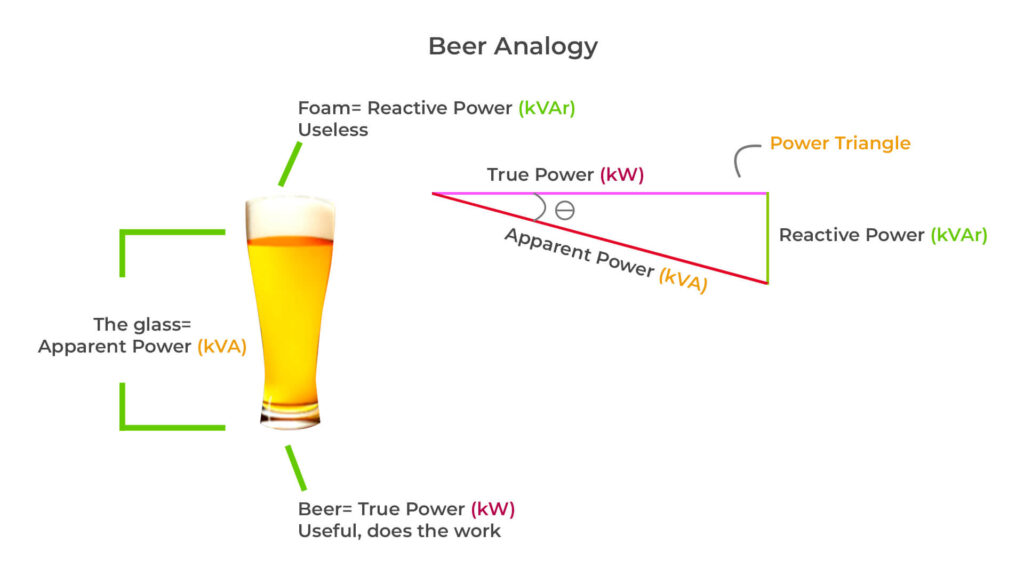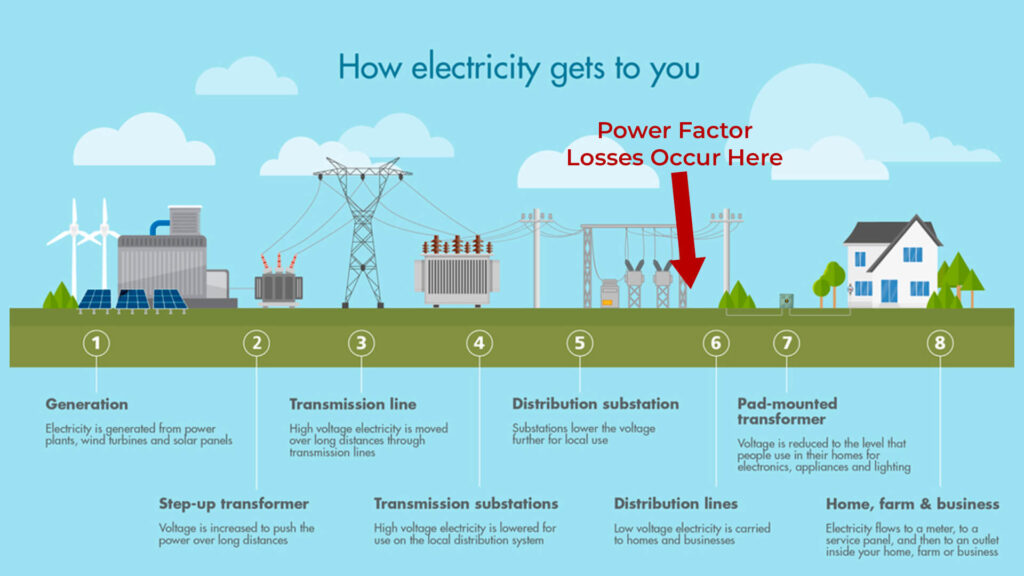About Power Factor Correction
What is Power Factor Correction?
Power factor correction is the process of improving the power factor of an electrical system. Power factor is a measure of how efficiently electrical power is being used in a system. A low power factor means that there is a lot of wasted energy or Reactive Power/KVAR, which can cause higher electricity bills and potential damage to electrical equipment. Power factor correction involves adding capacitors to the electrical system to improve the power factor and reduce energy waste by reducing Reactive Power/KVAR and increasing True Power or kW. This results in a more efficient system, lower energy costs, and reduced wear and tear on electrical equipment.
Causes of Low Power Factor
-
Inductive Loads
Inductive loads, such as motors, transformers, and fluorescent lights, can cause low power factors. These devices require reactive power to operate, which leads to a lagging current and low power factor.
-
Capacitive Loads
Although less common, capacitive loads can also cause low power factors. Capacitive loads, such as power factor correction capacitors and certain types of electronic equipment, generate reactive power, leading to a leading current and low power factor.
-
Imbalanced Loads
If there is an imbalance in the distribution of loads across the three phases of a power system, it can lead to low power factor.
-
Long Distribution Lines
When electricity is transmitted over long distances, the resistance and reactance of the transmission lines can cause a voltage drop and lead to low power factor.
-
Oversized Equipment
If the electrical equipment in a system is oversized for the load requirements, it can result in low power factor.
-
Harmonics
The presence of harmonics in a power system, caused by non-linear loads like computers and electronic devices, can contribute to low power factor.
-
Poor Power Factor Correction
Inadequate or faulty power factor correction equipment can also cause low power factor. It is important to note that a low power factor can result in several negative consequences, including increased energy consumption, higher electricity bills, reduced system efficiency, and potential penalties from utility companies.

